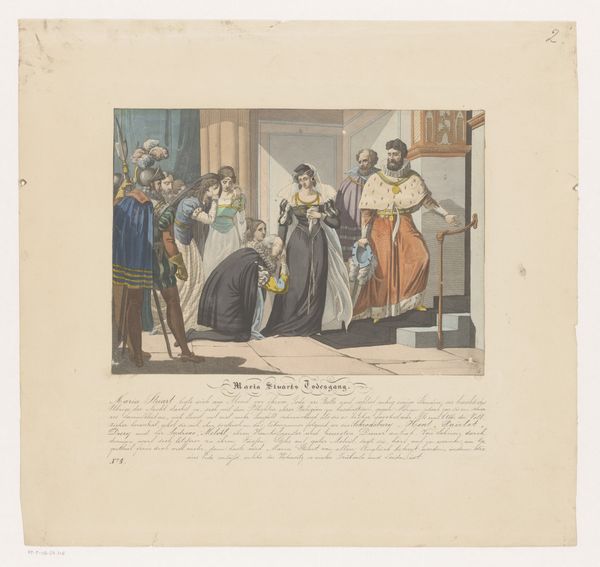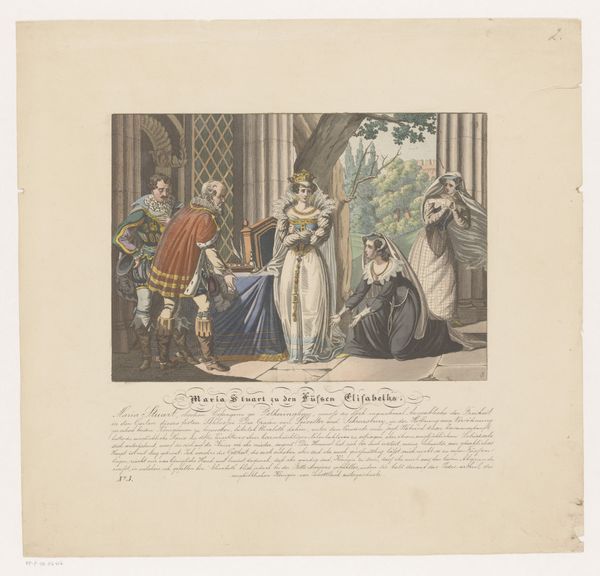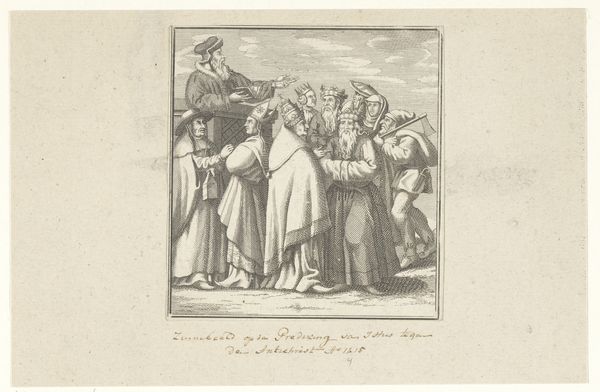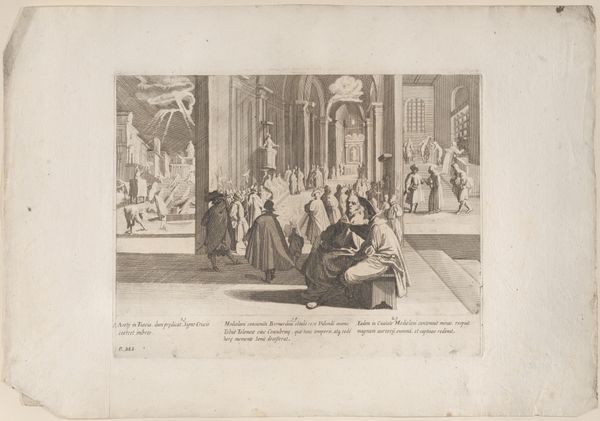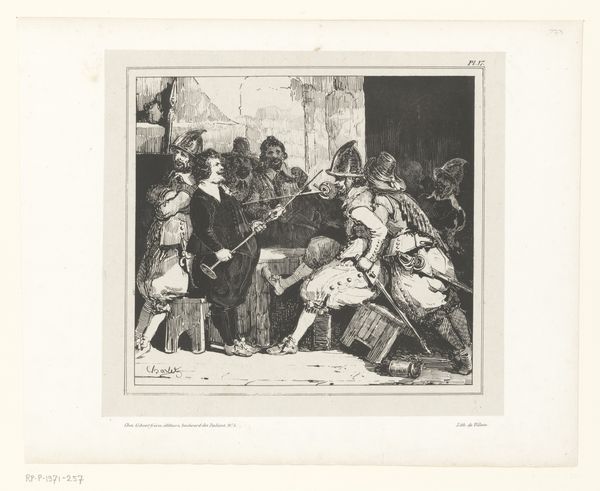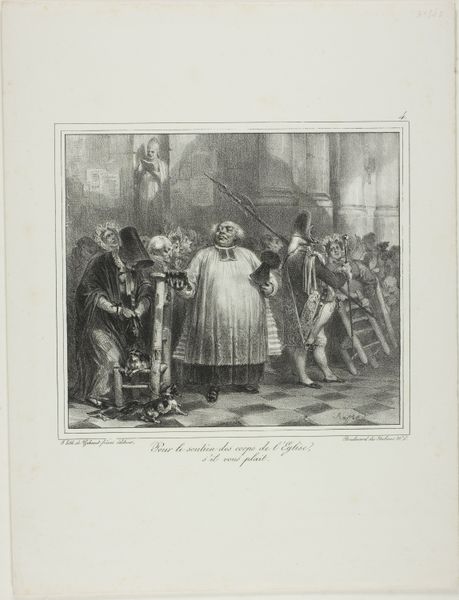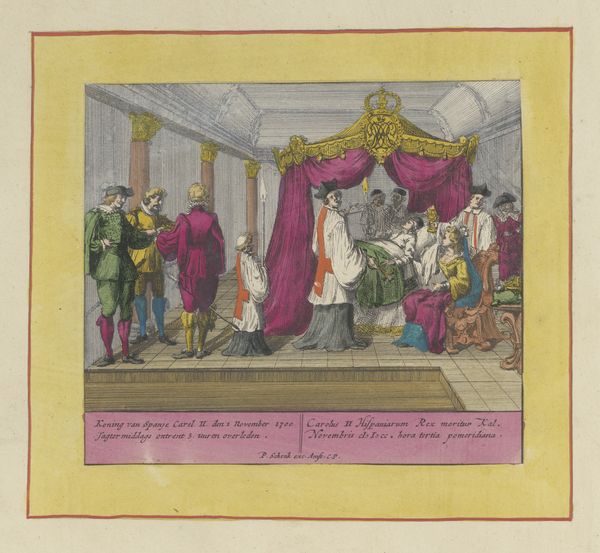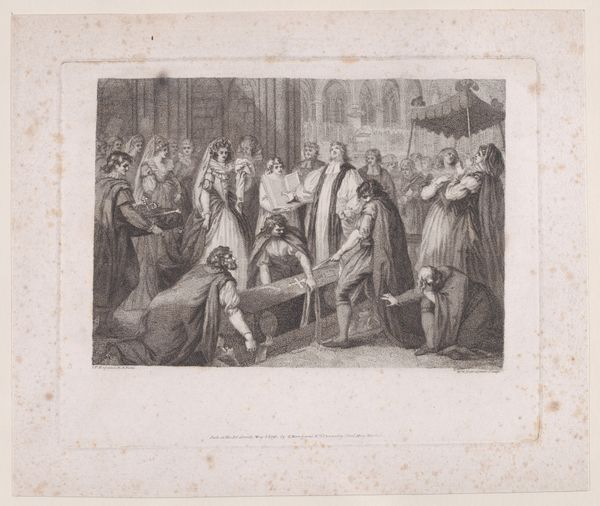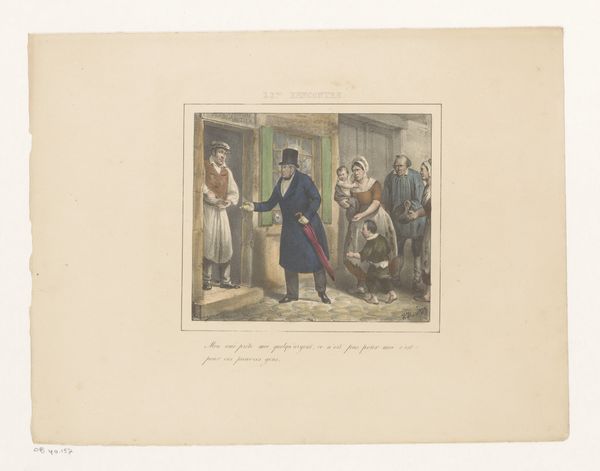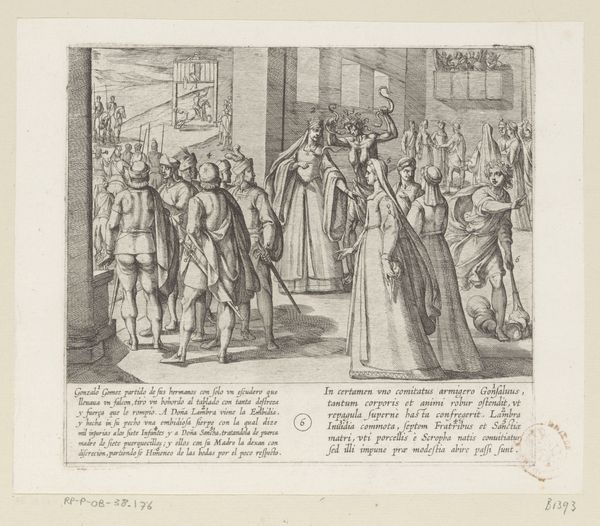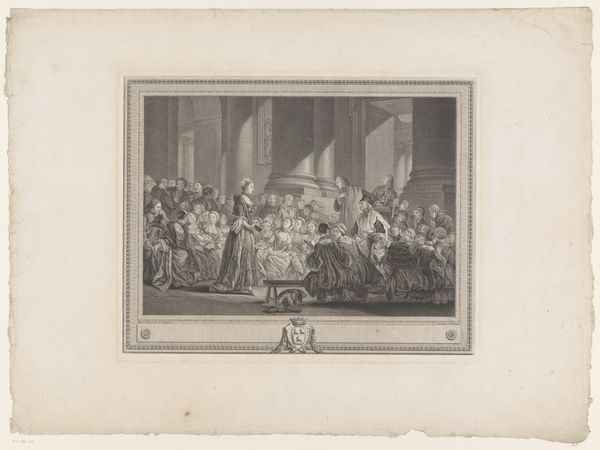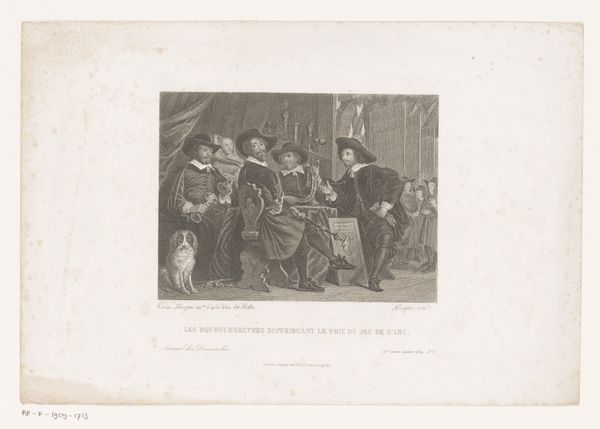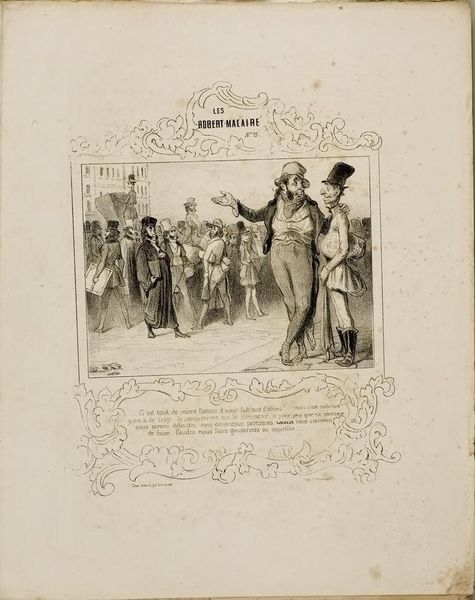
print, engraving
#
portrait
#
narrative-art
# print
#
romanticism
#
history-painting
#
engraving
Dimensions: height 188 mm, width 261 mm
Copyright: Rijks Museum: Open Domain
Curator: Looking at this engraving from the 19th century, we see "Terugkeer van Maria I Stuart naar Schotland vanuit Frankrijk," or "Return of Mary I Stuart to Scotland from France." The artist credited is Wolf, a known engraver. What's your initial take? Editor: There's a formality to it that feels decidedly staged. It's interesting to consider how much these kinds of images constructed narratives around figures like Mary Stuart, framing perceptions through carefully controlled visual means. Curator: Absolutely. The very act of commissioning this print – think about the selection of Wolf as the engraver, the specific imagery chosen – that speaks volumes about the desire to shape a particular memory. I find myself focusing on the process itself. The painstaking method of engraving lines to create tone and depth indicates a real investment of time and labor. What do you make of the intended audience and its cultural context? Editor: For whom was it made? We have to think about the rising tide of historical romanticism. Consider how these idealized depictions reinforce societal norms while constructing national identities tied to this royal lineage. These prints played a key role in popularizing those interpretations. Curator: The visual rhetoric is hard to ignore: Mary's dress, her bearing, and even the figures around her. Think of all those costumes! Who was involved in their design, manufacture, and then the dissemination of images of them? What power dynamics were embedded in each stage? The image naturalizes these power structures, using art and materials to project it beyond the court itself. Editor: I agree. And even beyond court. It’s about reinforcing specific ideals – nobility, divine right, all packaged for broader public consumption through distribution. The controlled image-making speaks of anxiety of powerful elite eager to protect their standing as times began to shift. How were those anxieties embedded in imagery as political messaging for consumption, perhaps propaganda? Curator: Food for thought. The texture of paper itself hints at the image’s broader circulation, making this an object embedded in webs of labor, and the trade, politics, memory... Editor: Ultimately, a fascinating illustration of how history painting, even in printed form, serves a powerful social and political role, shaping how events and figures are perceived, remembered and idealized, particularly for wider audiences.
Comments
No comments
Be the first to comment and join the conversation on the ultimate creative platform.
